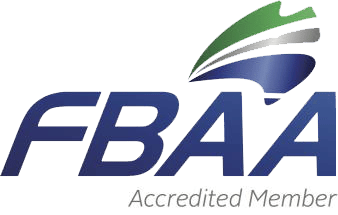Choosing the right home loan is one of the most important decisions a home buyer will make. With interest rates rising again in June as part of the Reserve Bank’s efforts to curb inflation, finding the right loan is more important than ever. In addition, a home loan is a long-term debt, so even a tiny difference in the interest rate will add up over time.
There is much to consider when hunting for the best home loan rate. A top priority should be avoiding mortgage stress when a household spends more than 30% of pre-tax income on home loan repayments. The consequence of defaulting on a mortgage is serious. Along with incurring significant financial penalties, there is the possibility of losing the roof over your head and not being permitted to obtain another mortgage for several years.
For some people, a flexible loan that allows for faster repayments is vital because the savings can be substantial. Peace of mind is also essential, but these kinds of “extras” all come at a price. So weigh whether these bells and whistles are worth the additional costs and always keep interest rates front of mind.
In the past, the big four banks in Australia — ANZ, Commonwealth, NAB, and Westpac dominated the home loan landscape, but now the field is awash with a range of lenders.
Firstly, How Much Deposit Do You Need?
The ideal deposit is 20% of the home’s total value because a lower amount typically requires Lender’s Mortgage Insurance (LMI) to be taken out, increasing total repayment costs.
It’s possible to obtain a loan with a smaller deposit, but this will increase the amount of interest to be repaid, and monthly repayments may also be higher. Most lenders use a loan-to-value (LVR) calculation to determine the amount they are willing to lend. LVR is the loan amount compared to the bank’s valuation of the purchased property. It is expressed as a percentage. If the bank is lending more than 80% LVR, the borrower will generally need Lenders’ Mortgage Insurance.
Grants for First Home Buyers
The First Home, Owner Grant scheme is designed to help people get a foot onto the property ladder. It is a national scheme, but the states and territories fund it, and each has its own set of eligibility rules and grant size, as outlined below:
- VIC: Grants in regional Victoria are up to $20,000, and $10,000 for everywhere else. First-home buyers buying a new or established home valued at $600,000 or less may be exempt from paying the stamp duty tax, while those purchasing a property of $600,001 to $750,000 may be entitled to a reduction of up to 50%. Eligibility rules apply.
- NSW: Grants are available up to $10,000. New properties valued at up to $650,000 are exempt from stamp duty. Properties between $650,000 and $800,000 may receive a partial concession provided eligibility criteria is met.
- NT: Grants of up to $26,000. Concessions on stamp duty are available for first-home buyers of up to $23,928.60, but only if they are not eligible for the grant scheme. Those buying a second property or building a new home may receive a grant of $7000. Seniors, pensioners, and carers may be entitled to a budget of $10,000.
- Tasmania: Grants of up to $10,000. First-home buyers of established homes and pensioners downsizing to new homes may be eligible for duty concessions depending on their settlement dates and other eligibility criteria.
- QLD: Grants of up to $15,000. There are a range of stamp duty concessions for first homes or for a property that is a principal place of residence, as well as vacant blocks if the buyer intends to build. The concession and eligibility criteria differ for each.
- ACT: Grants of up to $7000. A concession is available for a new home or a block of vacant residential land. The benefit is based on a sliding scale in line with property values, and eligibility criteria apply.
- SA: Grants of up to $15,000. Concessions on stamp duty are only available for off-the-plan apartments. The amount of the benefit depends on the date of the contract signing.
Saving Up and Getting Pre-Approval
Buying a house is a huge commitment that requires ongoing discipline to repay the mortgage. Saving for a deposit also takes time, and most people find that having automatic deductions from their weekly or monthly pay into a separate savings account can help them save.
Once the savings have hit the target goal for the deposit, it is time to apply for loan pre-approval. This means that a lender has agreed, in principle, to lend a specific amount of money towards purchasing a home. It isn’t complete or final approval, but it strongly indicates the maximum available funds you can borrow.
It is an exciting part of the process that can also be useful in refining the search and being able to bid with confidence at an auction.
Three Levels of Home Loans
There are three types of home loans: basic, standard and package.
- Basic. As the name suggests, a primary home loan offers a low-interest rate but limited features. This may not be the best option for those wanting to make extra repayments and draw on them later because restrictions and fees apply. On the other hand, essential loans are no-frills, which means they have very little in the way of additional features.
- Standard. A standard home loan provides more flexibility than a primary loan because it is possible to redraw extra funds paid into the mortgage. The option is also to switch to a fixed rate or divide the loan into partly fixed and partly variable. A 100% offset account is another option.
- Package. A package loan combines a standard loan with an interest rate discount of up to 1.2%, depending on the loan amount. This makes it cheaper than many essential loans. However, package fees of up to $400 per year may apply. The lender may include a free transaction account or a credit card with no annual fee.
Paying the Interest Off
There are many ways a homebuyer can structure the loan, depending on their needs:
Principal and interest loans (P&I)
As the name suggests, with principal and interest loans, your monthly repayments go towards both the interest on the loan and the principal, which is the loan amount. Therefore, making extra payments toward the principal balance will make it possible to pay off the loan more quickly and reduce the overall cost.
A P&I loan is often the preferred approach of owner-occupiers who want to be mortgage-free as soon as possible.
Interest-only loans
For an initial period, usually the first two years, your mortgage repayments will cover the interest on the amount borrowed. This means the debt is not reduced; you are merely chipping away at the interest. While repayments may be lower during the interest-only period, they will inevitably rise, so it is crucial to ensure that the loan will remain affordable once it expires. You are paying off both the interest and the principal.
Many property investors take out interest-only loans because they don’t intend to pay off the home loan entirely. Instead, they flip the property for a profit in a few years. This is, of course, a risky strategy that is entirely dependent on the property market rising year after year.
Variable rate home loan
This home loan’s interest rate fluctuates over time, usually as the RBA raises and lowers the official cash rate.
Pros of variable interest rates:
- You can take advantage of any interest rate decreases because less interest will be paid on balance.
- It makes it possible to get ahead on a loan and pay it off faster, as there is no limit on how many extra repayments you can make.
- It is possible to save on interest because money can be kept in an offset facility that offsets the interest portion of the loan.
Cons of variable interest rates:
- Conversely, if the interest rate increases, more interest will be paid than the amount agreed upon at the start of the loan term.
- More uncertainty is associated with this loan type due to its exposure to the movements of the RBA.
Fixed home loans
A fixed home loan is set in stone for a fixed period. Knowing the exact amount of your repayments makes it possible to budget with certainty, as homeowners will not be affected by RBA interest rate rises. The downside is not being able to benefit if rates fall.
Pros of fixing the rate:
- Many first-home buyers prefer to fix their interest rate because of its certainty to their household budget.
- It gives peace of mind, knowing there won’t be any nasty surprises if interest rates rise during the fixed rate term.
Cons of fixing the rate:
- Not being able to access extra features such as redrawing or making extra repayments that will allow the loan to be paid off more quickly.
- If rates fall, the higher rate will be paid regardless until the end of the fixed-rate loan term.
- There are also usually ‘break’ fees or ‘exit’ fees to pay as a penalty for refinancing.
An alternative to making the difficult choice between a fixed or variable interest rate is the split loan, also known as the partly fixed loan. Splitting the home loan is possible at any point during the life of the loan, and it means that a portion of the loan is set at a fixed interest rate, and the remainder is variable.
How to Compare Home Loans
There is a range of features to consider when comparing home loans, but among the most important are the following:
Interest rate
An interest rate is a fee charged for borrowing money from a lender. It is expressed as a percentage of the total loan figure, and the goal is to secure the lowest possible interest rate that you can.
Comparison rate
A comparison rate includes the interest rate and all the fees for administering the loan. The comparison rate provides a picture of the loan’s actual cost to the borrower and can be viewed as a more accurate interest rate regarding the cost to you. The smaller the difference between the comparison and advertised interest rates, the better the deal.
Monthly repayment amount
You must pay this money to the financial institution or the bank each month. Spending more than 30% of pre-tax income on your home loan repayments may plunge a house into financial stress, so aim for less than this amount.
Annual fees
The lender may charge an annual fee if the home loan is tied to special discounts under a package home loan. Be sure that you are comfortable with this amount.
Are there Additional Features?
It is also a good idea to investigate what additional features you may benefit from, such as an offset account where salary and savings can be deposited to reduce the amount owing on the home loan and whether you can make additional repayments without incurring a fee.
Equally, you may investigate whether the loan includes the option of a repayment holiday that allows home loan repayments to be paused when it would be difficult to make them, such as job changes or a short-term injury. For example, during the Covid-19 lockdowns, many banks offered repayment pauses to customers who needed it.
Paying off your loan faster
The term of a loan is typically 25 years or 30 years. Those five years can make a big difference to the amount that must be repaid monthly. So while it may seem advantageous to pay less each month, it adds up to more in the long run because you end up paying more in interest.
Choose the shortest loan possible without causing financial stress. That may be 15 years, or it could be 25.
Find the Best Home Loan Calculators
One of the best tools in your home loan arsenal is a calculator, which will help you determine how much you can borrow, what your repayments will be, and the difference paying off a little extra each month will have on your loan.
Visit the FirstPoint Mortgage Brokers Cronulla home loan calculator.
Common Home Loan Fees
Fees that may seem small when buying a property will add up over the loan’s lifetime, so make sure you know the actual cost of all the expenses. Some of the most common mortgage fees include:
- Exit fees: A one-off fee that can be incurred when a loan ends before its term ends.
- Redraw fees: Redraw fees are charged by the lender when the borrower takes the money back out that was paid into the mortgage.
- Break fees: A break cost is a fee that compensates the lender for its loss if the loan is repaid early or the borrower changes the product, interest rate or payment type during a fixed-rate loan.
- Account-keeping fee: These are ongoing fees that cover some or all of the lender’s internal costs of administering the account.
- Lender’s mortgage insurance: Lenders Mortgage Insurance (LMI) is insurance that a lender takes out to insure itself against the risk of a borrower being unable to meet their loan repayments and the house being sold for less than the outstanding loan balance.
- Valuation fees: cover the cost of property assessment undertaken by a third-party valuer to determine the property’s value.
Re-financing or Switching Home Loans
A refinancer is someone who switches from one home loan to another. It could be a completely new lender or the same one, and the savings made can be substantial. It is worthwhile to watch for better options because the home loan market constantly evolves its products and features and often offers a better deal to new customers than existing ones. It’s also essential to ensure you’re not paying for loan features you don’t use.
There are many different reasons to refinance a home loan. It may be a way of taking advantage of a more competitive rate, or it may be to swap from a fixed to a variable rate or to borrow more money to make home renovations.












